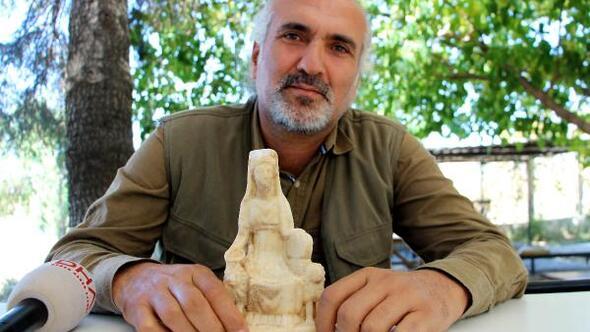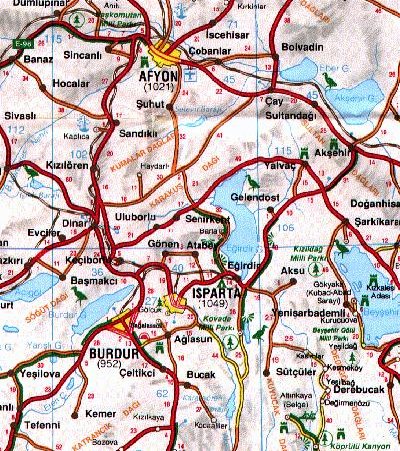türkçe links to original Turkish article
(HaberTürk Newspaper, 12 October 2017)
Hope Dr. Fred noticed that semicolon tucked into line three...
An ancient inscription in the Luvi language that was found near
Afyonkarahisar in 1878 has been deciphered. The inscription is
the longest heiroglyph remaining from the Bronze Age and Dr. Fred
Woudhuzien, one of only 20 people in the world who can read Luvi,
accomplished the translation.
In the inscription text it is explained that the kingdoms of Asia Minor
(Anatolia) united to build a fleet against the Hittites and how the
coastal cities of the eastern Mediterranean were subsequently conquered.
The text reveals that the "occupiers who come from the sea", who lived
at the tail end of the Bronze age and who are mentioned in ancient
Egyptian documents, were the local people of Anatolia.
Academicians have long argued over just who these mysterious sea people,
whom they have dubbed 'Trojan sea people', were. The complete
translation and related research will be published in the scholarly journal
"Proceedings of the Dutch Archaeological and Historical Society" in
December 2017.
The Amazing Dr. Fred Woudhuzien.
---------------------------------------------------------------------------------------------
türkçe links to original Turkish article
(Milliyet Newspaper, 12 October 2017)

The Equally Amazing Dr. Mehmet Özhanlı.
Five statues of gods and godesses have been found in perfect condition in the
prestige room of an archaeological excavation at the Men Kutsal Site in Pisidia
Antiokheia Antique City in İsparta's Yalvaç district. The head of the dig, Prof.
Dr. Mehmet Özhanlı, stated that the statues are of the goddesses Hekate, Athena
and Kybele, along with those of the gods Men and Apollon.
Dr. Özhanlı explained that "During the work done this year we have seen that
in one of the prestige rooms right in front of the temple all of the gods of Greek
Pantiona, Rome and Anatolian Pantiona have been brought together and a
cult was formed. In the year 360 A.D., when the last pagan emperor, Julianus,
was trying to revive paganism, all of these gods were brought together."
" In the middle is the drinking vessel of the local god of Anatolia, Men, and
behind that is the goddess Kybele. There is a smaller drinking vessel with
symbols of the goddess Demeter on it, as well as a statue of the god Men,
owner of the temple, on a horse and the figure of Apollon, too. Because
there is also a statue of Athena, the chief goddess of Athens, we see that
Men has brought all of these gods and goddesses together and the cult of
of Men has been merged with the other pagan divinities."
-------------------------------------------------------------------------------------
türkçe links to original Turkish article
(Hürriyet Newspaper, 12 October 2017)
When you wish upon a tomb, makes no difference who you bomb.
In Eğridir district of İsparta province the tomb of Baba Sultan, who,
legend has it, implored the invading Timur to go easy on the peoples
of Anatolia, has become a popular visiting spot for local residents
and those coming from afar. However, the visitors have turned the
top of the sarcophagus into a writing board.
Some of the messages and wishes include: "tie my mother-in-law's
tongue to her mouth", "I want a baby.", "Give my spouse a job." and
"I want to pass the university exam." There is no watchman at the
tomb site and entry is open to all, although the Eğridir municipality
takes care of the grounds. The groundskeepers, though, do not touch
whatever has been written on the sarcophagus.


Hiç yorum yok:
Yorum Gönder